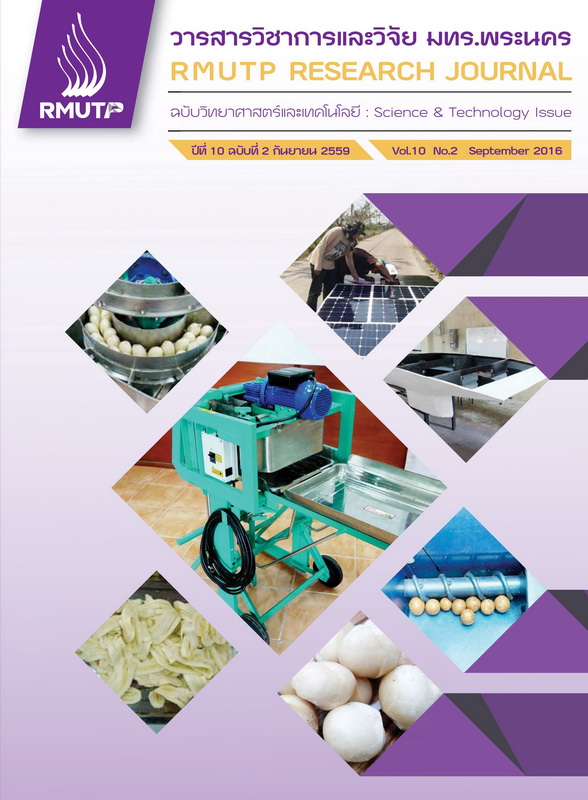การลดของเสียในกระบวนการผลิต กรณีศึกษา โรงงานดาเดียร์เซรามิกในจังหวัดลำปาง Waste Reduction in a Manufacturing Process: A Case Study of Dadear Ceramics Factory in Lampang Province
Main Article Content
บทคัดย่อ
บทคัดย่อ
งานวิจัยครั้งนี้มีวัตถุประสงค์เพื่อลดของเสียในกระบวนการผลิตเซรามิก ของโรงงานดาเดียร์เซรามิกในจังหวัดลำปางโดยใช้เครื่องมือควบคุมคุณภาพ 7 อย่าง (7 QC Tools) ที่ใช้ได้แก่ ใบตรวจสอบกราฟ แผนภูมิพาเรโตและแผนภาพก้างปลา ในการค้นหาสาเหตุและหาแนวทางแก้ไขปัญหา จากการศึกษาพบว่าปัญหาของเสียส่วนใหญ่มาจากกระบวนการเผาชิ้นงานเซรามิก ในส่วนของรถเข็นชิ้นงานเข้าเตาเผา กับเตาเผาชิ้นงานเซรามิกซึ่งมีอายุการใช้งานมานาน อุปกรณ์กับชิ้นส่วนเกิดการชำรุดเสียหาย และการขาดมาตรฐานวิธีการเรียงชิ้นงานเข้าเตาเผาของคนงานทำให้ชิ้นงานเกิดการกระทบกันและทำให้เกิดของเสีย ดังนั้นผู้วิจัยจึงได้ทำการปรับปรุงรถเข็นชิ้นงานเข้าเตาเผาและปรับปรุงเตาเผาชิ้นงานเซรามิกใหม่ จากนั้นทำการออกแบบตัวจับยึดชิ้นงานเซรามิก เพื่อช่วยคนงานในการจัดเรียงชิ้นงาน ผลการวิจัยและการรวบรวมข้อมูลจากแผนกตรวจสอบคุณภาพพบว่า ข้อมูลก่อนการปรับปรุงในเดือนกันยายน–ธันวาคม พ.ศ. 2556 เมื่อได้ทำการเทียบกับข้อมูลหลังการปรับปรุงในเดือนพฤศจิกายน พ.ศ. 2557–กุมภาพันธ์ พ.ศ. 2558 จำนวนของเสียที่เกิดจากกระบวนการผลิตจากเดิมร้อยละ 8.97 ลดลงเหลือร้อยละ 0.29 แสดงให้เห็นว่าการปรับปรุงประสิทธิภาพในครั้งนี้มีผลทำให้ของเสียที่เกิดจากกระบวนการผลิตลดลงถึงร้อยละ 8.68
Abstract
The objective of this research is to reduce waste in the production ceramics of Dadear Ceramics Factory in Lampang Province. The 7 quality control tools (7 QC Tools) were implemented including Check sheet, Graph, Pareto diagram and Fishbone diagram, were used in analyze problem and solve the problems. It was found that most of the wastes come from burning ceramics process. The kilns and wheelbarrow has been used for a long time furthermore the equipment and parts were damaged from lack of maintenance. The non-standard of product arrangement method into the furnace were the cause of waste. Thus, the researcher were improve wheelbarrow into the kilns and design a fixture to help worker to product arrangement.
The results of the research which geathering data from quality inspection department. Then comparing data before the improvement (between September to December 2013) and after the improvement (between November 2014 to February 2015) the wastes are reduced from 8.97% to 0.29%. The result of improving is very efficiency because it can reduce the wastes to 8.68%.

